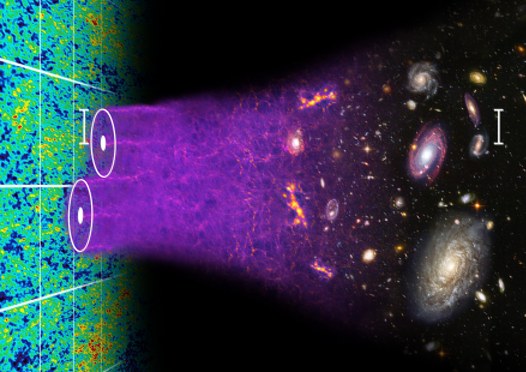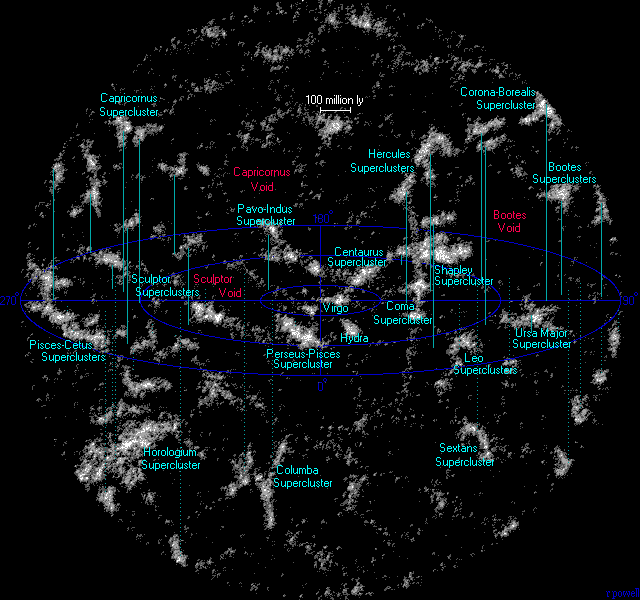geckzilla wrote:I dunno, man. I just don't know. I'd call it a BAO radius. The illustration makes it look like they are all the same distance but the measurement isn't specified. I'm trying to figure out what the connection between this and something like a Cepheid as a standard candle would be. I don't get it! Is it supposed to be distance from our position or distance between any two points?
I don't believe that this image really shows BAOs as suggested. Rather, I think it shows the
consequence of BAOs.
BAOs no longer exist (although I think the term may still be used for the consequential structure in some cases). They were a phenomenon of the early universe, when it consisted of an electron/baryon plasma. At that stage, sound waves introduced structure, in the form of density variations. That structure was preserved once the universe cooled and galaxies formed.
Here's an analogy. Ripples form on the surface of a pond because of the way sound travels in water. By studying the ripples, you can learn a lot about the physical nature of water. Suppose a burst of hail hits a pond, creating thousands of individual ripple rings. These run into each other, producing a complex surface that we can observe. We'd certainly not see anything like circles in that surface (which is what the APOD somewhat incorrectly shows). But if we measured carefully, we'd see certain recurring wavelengths, certain periodic structures. And from those, we could work backwards to the sound velocity in water. What we see in the Universe when we look around is a filamentary structure, and by looking at it the same way, we can work backwards to infer conditions in the early plasma universe, and confirm that they are consistent with our cosmology models (which include dark matter and dark energy).
My analogy would be better if I added a geothermal source under the pond that evaporated it into steam after the ripples formed, so we'd be looking for structure in one phase state in order to infer something about an earlier phase state.
 Baryon Acoustic Oscillations from SDSS III
Baryon Acoustic Oscillations from SDSS III
